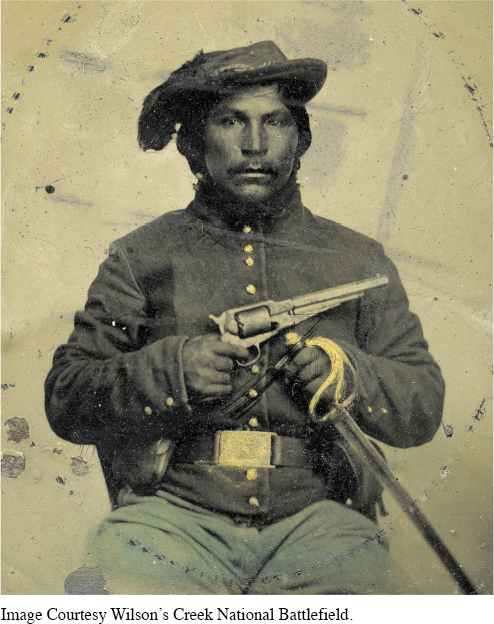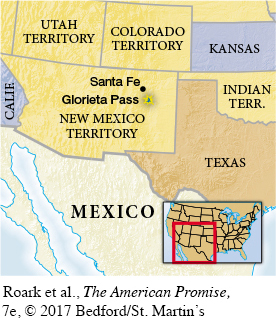The American Promise: Printed Page 413
The American Promise, Value Edition: Printed Page 381
The American Promise: A Concise History: Printed Page 434
Union Victories in the Western Theater

While most eyes focused on events in the East, the decisive early encounters of the war were taking place between the Appalachian Mountains and the Ozarks (see Map 15.2). Confederates wanted Missouri and Kentucky, states they claimed but did not control. Federals wanted to split Arkansas, Louisiana, and Texas from the Confederacy by taking control of the Mississippi River and to occupy Tennessee, one of the Confederacy’s main producers of food, mules, and iron—
The American Promise: Printed Page 413
The American Promise, Value Edition: Printed Page 381
The American Promise: A Concise History: Printed Page 434
Page 414Before Union forces could march on Tennessee, they needed to secure Missouri to the west. Union troops swept across Missouri to the border of Arkansas, where in March 1862 they encountered a 16,000-
Even farther west, Confederate armies sought to fulfill Jefferson Davis’s vision of a slaveholding empire stretching all the way to the Pacific. Both sides recognized the immense value of the gold and silver mines of California, Nevada, and Colorado. And both sides bolstered their armies in the Southwest with Mexican Americans. A quick strike by Texas troops took Santa Fe, New Mexico, in the winter of 1861–

The principal western battles took place in Tennessee, where General Ulysses S. Grant emerged as the key northern commander. Grant, a West Point graduate who served in Mexico, was a thirty-
The American Promise: Printed Page 413
The American Promise, Value Edition: Printed Page 381
The American Promise: A Concise History: Printed Page 434
Page 415In February 1862, operating in tandem with U.S. Navy gunboats, Grant captured Fort Henry on the Tennessee River and Fort Donelson on the Cumberland (see Map 15.2). Defeat forced the Confederates to withdraw from all of Kentucky and most of Tennessee, but Grant followed.
On April 6, General Albert Sidney Johnston’s army surprised Grant at Shiloh Church in Tennessee. Union troops were badly mauled the first day, but Grant remained cool and brought up reinforcements throughout the night. The next morning, the Union army counterattacked, driving the Confederates before it. The battle of Shiloh was terribly costly to both sides; there were 20,000 casualties, among them General Johnston. Grant later said that after Shiloh he “gave up all idea of saving the Union except by complete conquest.”
The American Promise: Printed Page 413
The American Promise, Value Edition: Printed Page 381
The American Promise: A Concise History: Printed Page 434
Page 416Although no one knew it at the time, Shiloh ruined the Confederacy’s bid to control the theater of operations in the West. The Yankees quickly captured the strategic town of Corinth, Mississippi; the river city of Memphis; and the South’s largest city, New Orleans. By the end of 1862, the far West and most—